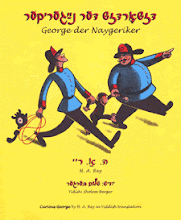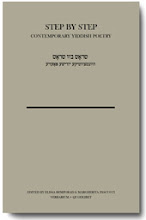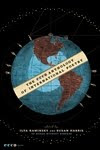Hair today
Sheitel-gate was fun, wasn't it? Let's post-mortem. Or, rather, let's me talk about what I found interesting. [None of what follows is original with me, and I haven't yet bothered to do the legwork to cite "in the name of the person who said it." If I'm not bringing the redemption, at least I'm getting this post written with reasonable dispatch.]
1. The psakim of the rabbis involved seemed to be uniformly sans detail, that is, willfully closed-mouthed with regard to metzius (the facts of the matter). They all ran like this, generally speaking: "We have received information that these wigs are associated with an idolatrous religious ceremony, therefore [varying halachic conclusions here]." Now, in a case of suspected idolatrous taint (in Jewish: khshash avoyde zore) it would seem important to define that taint precisely. Was the hair a sacrifice, an integral part of a religious ceremony, or neither? What religious role, if any, does the hair play after tonsure? And, finally (a question I saw nowhere addressed in the various Hebrew-language religious publications), why is Hinduism avoyde zore?
For one thing, of course, it's unfair to expect this level of detail from these psakim. They are not closely reasonsed defenses of a complicated argument, but simply emergency directives for the sake of "the many who ask." Do I wear the wig -- yes or no, rebbe? And, as far as that goes, that's the sort of answer many people want from their rabbis, across the religious spectrum. Aluminum pans: toyvel or no? Plastic: to be kashered or not? It's only when the questions transcend the ritual and border on the moral that more detail is demanded by the balebos, the layperson. You'll notice, for example, that precious few go to their rabbis and ask, "Gay marriage - yes or no? Withdrawal from Gaza - yes or no?" These are questions which already presuppose a moral or political stance irreducible to a two-sentence fax.
But maybe that's the point. The job of the posek is not (just) to give answers, but to help their audience - or, more precisely, their students - understand the ramifications of the questions they are asking. A proper psak, to my way of thinking, should incorporate and present such reasoning as can be disagreed with by any thinking Jew, and if the Jew on the receiving end doesn't appreciate such reasoning - well, then, they're not thinking enough.
2. The speed of psak-propagation. Connected to the questions of metzius I mentioned above is the suspicion, already pointed out by a number of people, that the facts of the matter have not changed very much in the past twenty years, that is, since the last time this matter was publicly decided. A reasonable conclusion is that psak, and halachah in general, is susceptible to fads and fashions as is any other realm of human activity. This is an obvious point, but it's important for a liberal Jew to make it when observing an Orthodox phenomenon. Many a time and oft have I heard right-wing critics of, say, Conservative Judaism remark, "I can predict future innovations in Conservative practice or ideology based on today's political or social trends!" True enough. But sheitels, believe it or not, have been controversial in the ultra-Orthodox community for many years now, due to their ever-increasing quality (almost indistinguishable from the hair of a single woman!) and expense. (If you read some of the recent psakim, you can almost hear the rabbis grumbling as they point out that they do NOT necessarily approve of sheitels in general.) Given sufficient expertise in the sociology of the ultra-O. community, it would not have been difficult to predict that such a sheitel revolution might come up over the Indian horizon.
This is just to say that oylem keminhagoy noyheg - the world has its practices, and these influence the workings of the Jewish world, though perhaps not in the same way as the non-Jewish world.
3. But the truly pluralist Jew, considering the stories of those self-sacrificing women who throw out or burn their sheitels for nothing other than the glory of God, must be able to disagree with regard to her practice (if she does indeed disagree), yet dramatize this powerful and valuable diversity with the cry Mi keamkho Yisroel! Who is like your people, Israel!
Postscript: As several folks in the comments section have pointed out, it's important to distinguish between full-length shayles-utshuves (responsa), like this one by Rabbi Y. Sh. Elyashiv (which itself acknowledges the need for more detailed knowledge of the ritual), and the short faxes, sent out by numerous rebbes, which have driven the current trend. (Thanks to The Town Crier for the Elyashiv link.) The reason I characterized Sheitel-gate as an example of a halachic fad is that, unless I'm mistaken, no evidence points to a change in the metzius. Moreover, the long responsa addressing the question in detail were only researched and brought up after the wave of prohibitions first began. The reasons for Sheitel-gate, I still maintain, are probably sociological.
With regard to Hinduism (which, as Naomi Chana points out, is even less helpful a term than "Christianity") and its identification as avoyde zore, I have no expertise, nor would it surprise me if it were, in fact, classifiable as AZ. But I haven't seen a thorough analysis.
Post-postscript: A real, honest to goodness rabbi and talmid-khokhem has already expressed much more concisely and authoritatively my doubts about Sheitel-gate.
Subscribe to:
Post Comments (Atom)









No comments:
Post a Comment